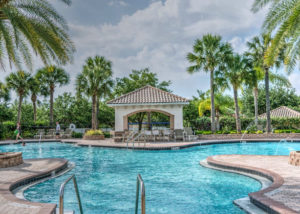Ever wished for a cool spot in your backyard where you can chill and enjoy nature? That’s where pergolas come in, these awesome structures can turn your regular backyard into a super chill zone.
Find out the easy stuff that makes pergolas so cool. We’ll talk about some pergola design specification where to put them and what materials work best, so you can have a cool setup without breaking a sweat.
If you’re pumped to turn your backyard into a super chill place, check out our full guide on pergola design specification.
Table of Contents
ToggleImportance Of Pergola Design In Dubai
Designing a pergola is super important because it makes your outdoor space awesome.
First, it gives you a cool spot for things like chilling, eating, or hanging out with family. Imagine it as an extra comfy living room.
A good-looking pergola adds a touch of beauty to your place. It’s like having a stylish piece of architecture in your backyard that makes everything look nicer.
When you design a pergola, you get to decide what you want to use it for. The design also helps make sure you stay comfortable under it, like having shade when it’s sunny or a breeze flowing through.
A well-designed pergola fits right in with the plants and other stuff around it, making everything look like it belongs together.
So, in simple words, designing a pergola is like creating a super cool outdoor spot that makes your home awesome and more valuable!

[ Pergola Design Specifications ] To Consider Before Design
Section 1: The Foundation – Material Matters
Let’s start with the basics – the materials that form the backbone of your pergola. Whether you’re drawn to the timeless appeal of wood, the durability of metal, or the low-maintenance charm of vinyl, choosing the right material sets the tone for your entire outdoor space.
Consider factors like climate, maintenance requirements, and personal aesthetic preferences to make an informed decision.
Section 2: Designing with Purpose – Size and Shape
Pergolas come in all shapes and sizes, each offering a unique charm to your outdoor space. Consider the purpose of your pergola – is it a cozy reading nook, an alfresco dining area, or a place to unwind with friends?
Tailor the size and shape accordingly, ensuring that it complements your lifestyle while creating a visually appealing focal point in your backyard.
Section 3: Building the Perfect Frame – Structure and Style
Now, let’s talk about the framework of your pergola. The design and structure not only influence the aesthetics but also the overall functionality. Choose between open-roof designs for a breezy, sun-dappled feel or opt for a closed-roof pergola to create a more intimate, sheltered space.
Consider decorative elements like lattice panels or climbing vines to add a touch of natural beauty.
Section 4: Finding Harmony – Colors and Finishes
Harmonizing your pergola with the existing elements in your outdoor space is crucial. From earthy tones that blend seamlessly with nature to bold colors that make a statement, the choice is yours.
Don’t forget about finishes – a weather-resistant sealant ensures your pergola stands the test of time while retaining its original beauty.
Section 5: Illuminating the Night – Lighting Options
Extend the usability of your pergola into the evening by incorporating thoughtful lighting. From twinkling fairy lights to stylish pendant fixtures, the right lighting adds ambiance and functionality.
Consider solar-powered options for an eco-friendly touch that keeps your outdoor haven glowing long after the sun sets.

What are the Structural Details of a Pergola?
The structural details of a pergola are essential for ensuring stability, durability, and a visually appealing design. Here are key structural elements and considerations when designing a pergola:
- Posts and Columns:
- Material and Size: Choose sturdy materials for your posts, such as pressure-treated wood, metal, or vinyl. The size of the posts depends on the overall size and weight-bearing requirements of the pergola.
- Placement: Properly space and anchor the posts to provide adequate support. Consider both the aesthetic and functional aspects when deciding on the number and arrangement of posts.
- Beams:
- Material and Size: Beams, often horizontal members, support the roof structure. Similar to posts, choose materials like pressure-treated wood or metal, and ensure the size is appropriate for the span they need to cover.
- Attachment to Posts: Securely attach beams to the tops of the posts, considering both the structural integrity and visual appeal.
- Rafters or Joists:
- Spacing: Rafters or joists are the diagonal or horizontal elements that form the roof grid. The spacing between these elements affects the amount of shade provided. Consider the local climate and the desired balance of sunlight and shade.
- Material: Use the same material as the posts and beams for consistency, ensuring a cohesive design.
- Roof Style:
- Open or Closed: Determine whether you want an open-roof design with spaced rafters or a closed-roof design with solid roofing material. The choice can impact the pergola’s aesthetics and its ability to provide shelter.
- Lattice and Cross Members:
- Decorative Elements: Lattice panels or cross members can be added for both decorative purposes and to create patterns of shade and sunlight. Consider incorporating these elements to enhance the visual appeal of your pergola.
- Fasteners and Hardware:
- Durability: Use corrosion-resistant fasteners and hardware to ensure the longevity of your pergola. Stainless steel or galvanized hardware is often recommended to prevent rust and corrosion.
- Anchoring:
- Secure Foundation: Ensure the pergola is securely anchored to the ground or a concrete foundation. Proper anchoring prevents movement, especially in regions prone to strong winds or inclement weather.
- Bracing:
- Stability: Depending on the design and size, bracing may be necessary to enhance the stability of the pergola. Diagonal braces can be strategically placed to prevent swaying or leaning.
- Finishes and Sealants:
- Protection: Apply appropriate finishes and sealants to protect the wood or other materials from the elements. This helps prevent decay, rot, and other weather-related damage.
- Lighting Integration:
- Electrical Considerations: If you plan to incorporate lighting fixtures, consider the electrical aspects during the construction phase. Ensure there are proper channels or conduits for wiring.
- Climbing Plants and Vines:
- Support Structures: If you intend to encourage the growth of climbing plants or vines, include additional supports in the design. These can be integrated into the pergola structure to provide a natural, green element.
Conclusion:
As you embark on your pergola design specifications journey, remember that it’s not just about creating an outdoor structure; it’s about crafting an experience.
By paying attention to materials, size, structure, colors, and lighting, you can design a pergola that not only enhances your outdoor living space but becomes a cherished extension of your home.
So, roll up your sleeves, unleash your creativity, and let your pergola design specifications be a reflection of your personal style and the lifestyle you aspire to enjoy.
Happy Designing!

